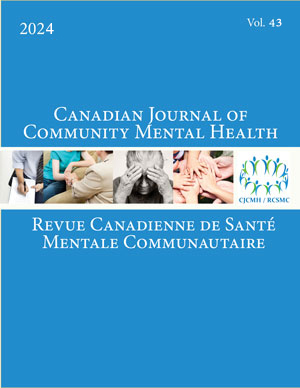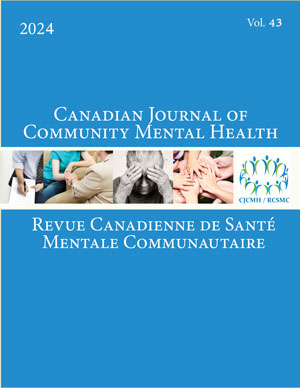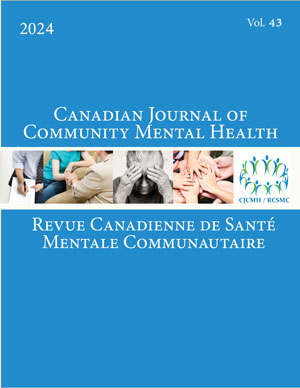Volume 32 • Number 1 • March 2013
Special issue: Dedicated to the memory of Dr. Clyde Hertzman
Articles
OPEN ACCESS
Canada urgently requires a population health approach to children's mental health—promoting health and preventing disorders, in addition to providing treatment. Underpinning this approach, indicators could enable population monitoring, thereby informing ongoing public investments. To investigate potential indicators for British Columbia, we developed a comprehensive population health framework, established selection guidelines, reviewed data sources, and identified sample indicators. While 15 survey and administrative sources yielded 90 indicators, there were significant imbalances in coverage of the framework. To create truly comprehensive children's mental health indicators, we therefore recommend collecting new data, enhancing existing data sources, and evaluating existing programs.
OPEN ACCESS
This study examined links between depression and multilevel factors among children from Saskatoon elementary schools. A total of 4,200 students participated in the Saskatoon Student Health Survey conducted in 2008–9. Covariates included demographics and family structure, relationships, physical activity, bullying experiences, and school refusal behaviours. A multilevel logistic regression model was used to examine the impact of individual-level and school-level (contextual) factors. The study revealed that depression disparity existed among schools, and students’ school refusal behaviours such as skipping or being suspended from school were among the main factors contributing to the disparity between schools.
OPEN ACCESS
The effect of social determinants of health on depression prevalence and treatment access was examined using community survey and administrative data on mental health service users in the Calgary Health Region (CHR). Consistent with national prevalence data, depression was significantly associated with female gender, younger age, and health risk factors such as smoking, hypertension, and obesity. The prevalence of depression causing interference in daily functioning across 19 social districts (subregions within the CHR) was significantly related to community-level indicators of single-parent status, low-income families, and low educational achievement in each district. Disparities in treatment access were also found with persons living in the most impoverished districts having the lowest rates of accessing professional mental health services.
OPEN ACCESS
How paternal influences interact with community factors to determine adolescent mental health is currently not well understood. In the current study we present a unique analysis of how paternal work stress, mental health, ethnicity, work history, and migration patterns between rural and urban communities (or vice versa) are associated with mental health outcomes among 2,342 adolescents. Path analyses revealed that fathers’ relocation was associated with less paternal work stress, and fewer mental health problems both in adolescents and their fathers. These findings contribute to our understanding of how family-level variables interplay with community characteristics to promote or hinder mental health among youth.
OPEN ACCESS
Suicide is the second leading cause of death among adolescents in Canada and globally. The purpose of our study was to calculate what proportion of adolescent suicide attempts could be prevented in the absence of verbal, physical, and sexual violence. Using the province-wide 2008 British Columbia Adolescent Health Survey (N = 29,315) we calculated population-attributable fractions for each type of violence, as well as exposure to any violence, separately by gender, among adolescents age 12–19. We found violence victimization is implicated in the majority of suicide attempts. Focusing on violence prevention may be an important strategy for reducing suicide among young people.
OPEN ACCESS
This paper explores the life circumstances and mental health experiences of welfare-reliant lone mothers, utilizing data from the Lone Mothers: Building Social Inclusion project, a Canada-wide research program. On the basis of qualitative interviews conducted with 43 welfare-reliant lone mothers living in Toronto, Ontario, we examine the conditions of their lives and the ways in which mental health, poverty, and single motherhood intersect. These intersections reveal the problematic nature of the traditional mental health system's response to these women. Required is a broader understanding of the ways that impoverished lone mothers’ mental health is structurally situated, and requires population-based rather than individualized responses.
OPEN ACCESS
In this study, data from 181 income-assisted single mothers residing in Ontario, Canada, is used to examine the process through which childhood abuse and intimate partner violence (IPV) affect current post-traumatic stress disorder (PTSD) symptom levels. Structural equation modelling is used to examine the mediating effects of empowerment, social support, and interpersonal conflict on the trauma–PTSD process. Empowerment and social support are highlighted as key protective factors that may be compromised by exposure to abuse/violence and interpersonal conflict. Implications include understanding the ways in which women’s empowerment may be enhanced particularly in the post-trauma period.
OPEN ACCESS
During the past decade, teachers in over 1,500 schools in Canada have been trained to implement the empirically validated Fourth R program, but the sustainability of the program post-training is unknown. For this study, 197 teachers in 26 districts in 6 provinces were surveyed to determine the extent to which they were using the program 2 years or more after training, what modifications they make, and perceived barriers to implementation and sustainability. Results indicated high satisfaction with the program, strong implementation fidelity, and the importance of training, support, and accountability in improving implementation. Training, implementation, and monitoring implications are highlighted.
OPEN ACCESS
This study reports the implementation of a program for early onset disruptive behaviour (Webster- Stratton & Hammond, 1997) through a hospital– community agency partnership in a demographically highrisk community traditionally underserved for mental health services. Sixty-four families at the clinic site and 19 at the community site completed the program at similar rates. The community sample had significantly higher demographic risk (income, immigrant status, parental education). Both groups showed significant improvement on parent-rated disruptive child behaviour and parenting stress. Staff interviews indicated strong support for program continuation and identified areas needing further attention. The findings are discussed in terms of possible approaches to mental health promotion in high-risk communities.
OPEN ACCESS
This study examined the long-term impacts of the Better Beginnings, Better Futures project, a universal, community-based prevention program. Generativity was studied as an indicator of positive mental health, using a narrative analysis of youths’ stories about turning points in their lives. A quasi-experimental design was used to compare youths aged 18–19 who participated in Better Beginnings when they were 4–8 (n = 62) and with youths from comparison communities who did not participate in Better Beginnings (n = 34). Significant differences between the 2 groups were found on 2 measures of generativity. The findings suggest the utility of adopting a narrative approach to evaluate the long-term outcomes of prevention programs for children and youth.










